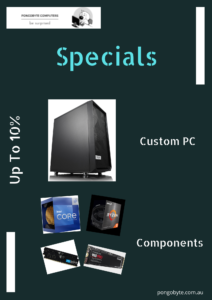Building computers is a rewarding experience and our efforts are centered around your exact requirements in terms of performance and reliability.
We follow a structured computer design, assembly and testing procedure, in order to achieve these goals. Please see below a few details of our work.
1. Design starts with detailed and upfront discussions with you, where we gather your requirements, expectations and other info that will form the basis upon which we design the new system.
We aim to build a computer optimized to perform the tasks that you’re mostly interested in. All the different components will be chosen based on your requirements and we will suggest a number of options to suit.
Every application has particular requirements, for example there are some tasks that are mostly about CPU performance and less about GPU, while others employ the unique compute capabilities of a discrete GPU to provide a significant boost in performance.
We are always open to suggestions and we do all we can to accommodate your needs, while at the same time offering our honest advice based on the experience we gathered from building similar systems.
Once a configuration is agreed upon, we will start sourcing the parts required from a number of well established suppliers of computer components. All our components are brand new from well known manufacturers. We do spend a significant amount of time researching the latest technologies, reviews and prices and when combined with our experience, this info will help us select the most suitable parts for your new computer.
2. Assembly is where the new system takes shape and we always dedicate a considerable amount of time and effort for this part of the process.
We firstly inspect and test the core components, ie CPU, MB, RAM, PSU, outside of the case, in order to avoid undue surprises later on. We then assemble these components into the case, to see how everything fits inside and to plan the cable routing.
We want you to have a very clean build, with all cables secured and routed in the best possible way to improve not just the look of the build, but also the internal air flow. All cable connections, fittings, screws are carefully inspected during assembly and also during the final QC, before the system is packed for delivery.
The case airflow will determine the positioning of the various fans inside the case and while we try to get the best positioning the first time, during subsequent testing this position can change. Correct and optimized cooling will greatly benefit the overall system performance, so we do not overlook this aspect and we always include the number and size of the cooling fans into our system specifications.
3. Testing is how we make sure that your new system will deliver the expected performance, in a way that will allow for a long life-cycle. It is an area where we dedicate a number of days making sure all components are working well both individually and collectively as part of the system.
We start with burn-in testing of the individual components, mainly the CPU, RAM and GPU. We use specialized software that will test the endurance and reliability of components using heavy workloads. We monitor the system stability and temperature levels, looking out for any errors or high temperatures that might indicate an insufficient cooling design.
We use both synthetic and real-world type of burn-in tests in order to get as much detail as possible in regards to the system design, stability and reliability. These tests are done in order to reduce the possibility of failure once you’ve taken delivery of your new computer. The other important reason is to ensure that the cooling performance of the CPU and the system overall is adequate. Correct temperature control is very important if we want to ensure your system will work at peak performance for as long as possible. Some of the programs we use are Prime95, AIDA64 and others.
We finish the testing process with benchmark testing, where we collect baseline performance parameters for your system. We use this to compare and validate your system design against other systems we’ve built. It will also serve as a reference later during the life-cycle of your system as a troubleshooting tool.
For benchmarking, we use a number of applications that will test the performance of the individual components in different scenarios, both as an overall score or as a more in-depth performance analysis depending on the main purpose of your build. For example, for a gaming system we will conduct more testing of the GPU performance using tools that measure gaming performance. For a video editing workstation, we will focus more on testing tools that will yield performance indicators for tasks like video encoding. Some of the programs we use are Handbrake, Realbench, Cinebench and more.
All our systems are built based on a structured process as outlined above and they have to pass a QC that currently includes around 30 different check items. We provide copies of all our testing results with your new system.
When viewing our systems, you will also find photos of previous builds. Please note that the photos may show a configuration that is not current, given that we constantly update our systems.


